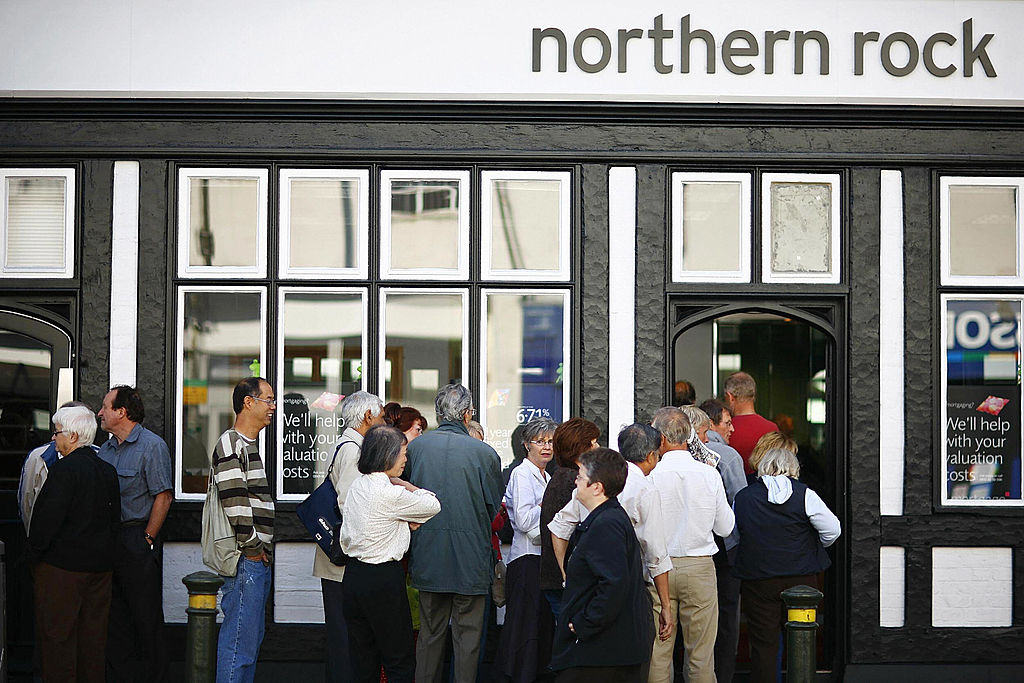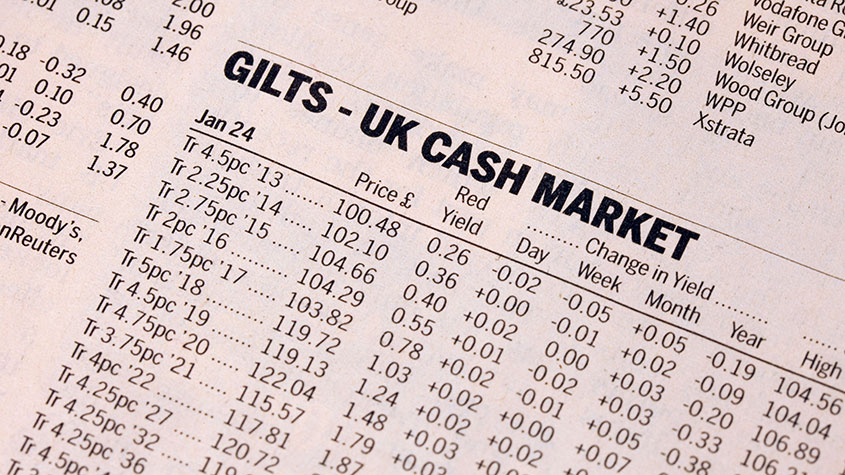The best way to buy linkers
The Bank of England has just switched a big chunk of its pension fund into inflation-proof, index-linked gilts - 'linkers'. So should you follow suit and invest too?
The Bank of England responsible for setting the base interest rate and printing money has just switched a big chunk of its pension fund into inflation-proof, index-linked gilts ('linkers'). Should you follow suit and invest too?
Deflation or inflation?
The Old Lady has been slashing the UK base rate (to 0.5%) to fend off slumping demand. But that's good news, not for 'linkers', but for the fixed-income gilts that make up a majority of government IOUs.
Say the government issues 6% gilts redeemable at 'par' usually £100 each in ten years' time. If the base rate falls, that fixed 6% (of £100, or £6) looks more and more attractive. That increases demand for the bond and pushes up the price. Rising prices in turn squash the bond's return (or 'yield') because the fixed £6 is an increasingly small percentage return on the price paid. And with many investors worrying about deflation and seeking safe havens, conventional ten-year gilt yields have shrunk to around 3.45%.
MoneyWeek
Subscribe to MoneyWeek today and get your first six magazine issues absolutely FREE

Sign up to Money Morning
Don't miss the latest investment and personal finances news, market analysis, plus money-saving tips with our free twice-daily newsletter
Don't miss the latest investment and personal finances news, market analysis, plus money-saving tips with our free twice-daily newsletter
But if inflation were to take off at 3.2%, the Consumer Price Index (CPI), which excludes property costs, is still above the 2% target anyone already holding fixed coupon gilts could suffer. The fixed coupon is just that fixed, even as the cost of living rises. And the rising central-bank interest rates that would be needed to quell inflation could pummel prices. Enter index-linked gilts.
Index-linked gilts are gaining fans
Index-linked gilts are less common than standard fixed-income gilts. Nonetheless, the bond market's desire to invest in something inflation-proof was apparent from the last recent big auction. This included £1.1bn of 1.875% November 2022 index-linked gilts. Bids received from buyers were 2.72 times the bids accepted by the Treasury's auctioneer the UK Debt Management Office (DMO).
The mechanics
Index-linked gilts are designed to be inflation-proof. That's because both the coupons paid every six months, typically and the capital returned at maturity (in, say, 2022) are adjusted for changes in the Retail Price Index (RPI). So the earlier gilt with a coupon rate of 1.875% will pay a coupon every six months, based on a £100 par value for the gilt, equal to £1.875/2 times an RPI index ratio. That ratio takes account of any change in the RPI between the issue date and the coupon date (subject to a three-month lag for gilts issued after July 2005 and an eight-month lag for those issued before then see the DMO websitefor the full calculations).
In short, if the RPI is rising, each fixed coupon is adjusted upwards, and if it's falling each coupon is reduced bad news in a deflationary environment where the coupon could in theory hit zero. The exact size of the adjustment is a function both of the length of time between the issue date and each coupon date, and what the RPI does in the meantime.
There is also an RPI-based adjustment made to the final redemption payment received at maturity by the holder of the gilt. If the RPI rises between, say, 2009 and 2022, the redemption value will increase too. But under deflationary conditions you would receive significantly less. And note that should the CPI index surge faster than the RPI, most linkers will not fully hedge CPI inflation.
Should you buy now?
The gap between the yield on non-inflation-adjusted standard gilts and that on equivalent linkers is revealing, says Neil Collins on Reuters. It suggests that investors in conventional gilts will only do better than those in index-linked gilts if inflation, as measured by the RPI, "stays low for a very long time: under 1.6% for the next seven years and under 2.6% for the next 15". With governments everywhere printing money and the era of rock-bottom prices for Chinese manufactured goods at an end, those figures look like "a true triumph of hope over experience". During the last low inflation decade, for example, inflation still averaged 2.83% per year.
Like conventional gilts, there is no stamp duty to pay when you buy linkers and any capital gains are tax-free. Interest income, however, is taxable, whether index-linked or not.
What to buy

You can buy new linkers at auction as an 'approved investor' (see Dmo.co.uk for more details) and purchase existing ones via a broker, or direct, at Computershare.com. But we wouldn't. Too many factors affect prices, liquidity can be poor and you need a redemption date at least five years away if you plan to pop one into an Isa. For a simpler, cheaper hedge against the return of RPI inflation, we prefer the exchange-traded fund iShares GBP Index-linked gilts (LSE:INXG).
Get the latest financial news, insights and expert analysis from our award-winning MoneyWeek team, to help you understand what really matters when it comes to your finances.
Tim graduated with a history degree from Cambridge University in 1989 and, after a year of travelling, joined the financial services firm Ernst and Young in 1990, qualifying as a chartered accountant in 1994.
He then moved into financial markets training, designing and running a variety of courses at graduate level and beyond for a range of organisations including the Securities and Investment Institute and UBS. He joined MoneyWeek in 2007.
-
 The shape of yields to come
The shape of yields to comeCentral banks are likely to buy up short-term bonds to keep debt costs down for governments
-
 The sad decline of investment clubs – and what comes next
The sad decline of investment clubs – and what comes nextOpinion Financial regulation and rising costs are killing off investment clubs that once used to be an enjoyable hobby, says David Prosser
-
 Why Scotland's proposed government bonds are a terrible investment
Why Scotland's proposed government bonds are a terrible investmentOpinion Politicians in Scotland pushing for “kilts” think it will strengthen the case for independence and boost financial credibility. It's more likely to backfire
-
 How have central banks evolved in the last century – and are they still fit for purpose?
How have central banks evolved in the last century – and are they still fit for purpose?The rise to power and dominance of the central banks has been a key theme in MoneyWeek in its 25 years. Has their rule been benign?
-
 Is Britain heading for a big debt crisis?
Is Britain heading for a big debt crisis?Opinion Things are not yet as bad as some reports have claimed. But they sure aren’t rosy either, says Julian Jessop
-
 Retail bond paying 8.25% launches – should you buy it?
Retail bond paying 8.25% launches – should you buy it?A new bond from alternative property lender LendInvest looks eye-catching but how do retail bonds work, and what are the risks?
-
 Is it time to buy Gilts?
Is it time to buy Gilts?Advice Gilts offer a higher yield than most savings accounts and could be an attractive alternative for those with a large lump sum to invest.
-
 The taper tantrum begins
The taper tantrum beginsNews Markets had so far shrugged off the prospect of central-bank monetary tightening. But not any more.
-
 How will we repay our vast debt pile? Do we even need to?
How will we repay our vast debt pile? Do we even need to?Sponsored In his recent articles looking at different aspects of the fixed-income investing world, David Stevenson looked at inflation. Today he looks at a closely related concept – government debt.
-
 Corporate bonds: central banks top up the punch bowl yet again
Corporate bonds: central banks top up the punch bowl yet againNews The corporate bond market continues to deliver unlikely returns, as America’s Federal Reserve stepped in with unprecedented support.